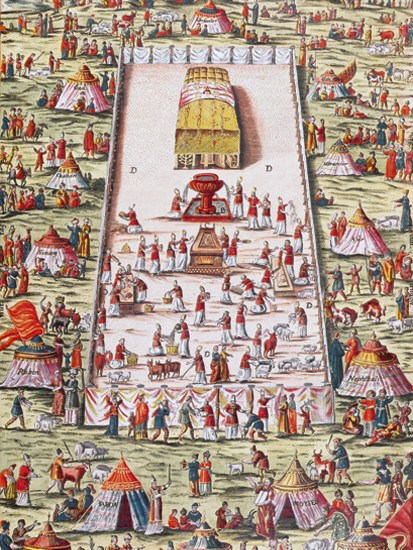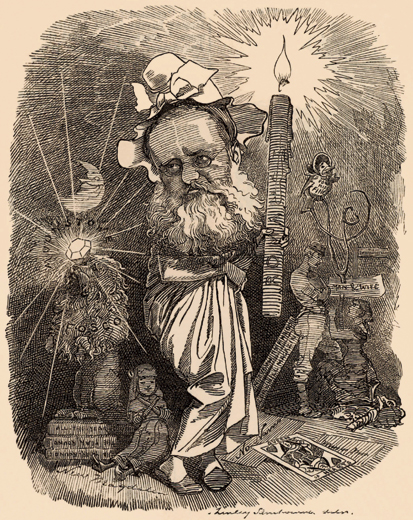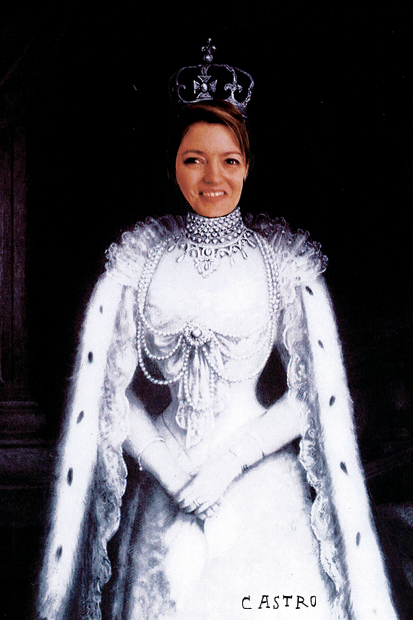The recorder of early Jewish history has two sources of evidence. One is the Bible. Its centrality was brought home to me by David Ben-Gurion when I went to see him in Jerusalem in 1957. He had a big Bible on his desk, and banged it repeatedly with his fist:
There, it’s all there, the past, present and future of the Jewish people. God? Who knows God? Can you believe in someone you don’t know? But I believe in the Bible. [Bang, bang.] The Bible is a fact. [Bang.] A record and a prophecy. [Bang.] It’s all there, Mr Johnson. Read your Bible, understand your Bible, and you won’t go wrong about the Jews. [Final bang.]
Simon Schama, being a learned scholar as well as a proud and sensitive Jew, is not so sure. He sees the Bible as mostly no more than ‘an echo of the historical truth’ and ‘probably not even that’.
He admits ‘there is a point in the epic when the storyline and the reality of Jewish history do indeed converge’. But the Hebrew Bible is essentially ‘the imprint of the Jewish mind, the picture of its imagined origins and ancestry … the original treasure of its spiritual imagination’. Hence there is need for a second, secular source of evidence, which is quite distinct from the real or imagined word of God (or Yahweh or YHWH) and which has been accumulating over the past 200 years and more. It is these records on which Schama mainly relies for the compilation of his book. With the exception of rare histories like Josephus, these records do not single out Jews for religious purposes, but concern ordinary members of the community whom the chance survival of a papyrus, or the accident of an archaeological dig, have elevated from the general mass of Jews into significant figures.
Thus Schama begins his account with a letter from a Jewish father, Osea, to his son Sheloman, then serving as a soldier. It was written in Aramaic, in 475 BCE, the tenth year of the reign of Xerxes, the Achaemenid King of Persia, and was sent 500 miles up the Nile to the island of Elephantine, to await delivery. It is part of an archive from this ancient Jewish military colony edited by the scholar Bezalel Porter. It is an interesting letter and enables Schama, among other things, to introduce his Jewish mother joke, one of the running gags which enliven his account.
He takes especial delight in the contemporary names which emerge from such sources. Ananiah, Berechiah, Daliah, Shemaiah, Gamariah, Uriah, Pelahiah, Azariah, Zechania, to give a few. The characters include, to quote his list,
anxious mothers, slave-girl wives, kibitzers and quibblers, hagglers over property lines, drafters of prenups, scribes, temple officials, jailbait indignant they were set up for a fall, big shots and small fry.
Schama makes excellent use of archaeological evidence, of Iron Age hill forts for instance, some material as recent as 2007. He naturally plunders the immense Cairo Geniza depository of records, probably the largest single collection of written words in history, until the electronic dumps of our own time. It includes 300,000 paper documents, though marriage contracts, divorces and slave-manumissions were considered too important for paper and were still written on parchment.
In the medieval period he is able to quote Hebrew poetry, much of it erotic, and advice from the Talmudic sages to teenage girls on what sort of depilatories to use. Rav Yehuda says, ‘Poor girls apply lime, rich girls use fine flour and princesses oil of myrrh.’
Schama finds that by comparing and contrasting these two chief sources, many of the certitudes of Jewish history dissolve or even disappear. Thus, the separation of men and women in synagogues during early times is revealed as a myth, the portrayal of the natural world or even men and women on the mosaic floors or the walls of such buildings emerges as normal rather than exceptional. Indeed, although the Greek and the Jewish cultures have been contrasted as aesthetically incompatible for millennia, the synagogue itself was in essence a Hellenistic institution, and many of the early synagogues took the form of Greek temples.
This did not prevent Hellenistic times being a period of occasional anti-Jewish persecutions of the utmost savagery, as the records of the Maccabees abundantly demonstrate. Indeed it is a theme of Schama’s book that although persecution of the Jews by their two bigger ‘religions of the book’, or both together, might be portrayed as the normalcy of Jewish history, so also might be peaceful cohabitation.
Schama is able to demonstrate the long persistence of non-Jewish varieties of Judaism. He shows that Islam was essentially Jewish in its origins. Jewish and Islamic forms of monotheisms were able to co-exist peaceably among many tribal parts of Arabia for long periods, and clashes were the exception not the rule. With the Christians it was more difficult because the accusation of deicide was, from early times, the occasion of violent persecution.
Nevertheless it is astonishing how often Jewish merchants and financiers were able to accumulate immense fortunes in the Christian Middle Ages, often at surprising speed. Nor were these enterprising souls always men. Schama tells us of hugely successful, ingenious and, indeed, entertaining women bankers and moneylenders, who imposed their strikingly sharp personalities on the record.
However, the story of the Jews, as Schama tells it, is fundamentally the story of the interaction between words and people — the words of the Bible, and the Jews who clung to them in all their adversities. At various times — under the Judges, under the Davidic Kingdom, and under the Maccabees — the Jews created states or kingdoms. But the political solution they gradually evolved was that the best kind of organisation for their people was one which did not depend upon territory or weapons, warfare or frontiers, but on words. This political theory of the omnipotent word is one of the chief Jewish contributions to history, and it emerges strongly from Schama’s account.
This first period of post-biblical history was brought to a natural end by the Iberian expulsions of the 1490s, which destroyed that delectable blend of Judaic and Islamic culture, the kingdom of Andalusia. It forms a fitting conclusion to Schama’s first volume. I shall be fascinated to see how, in his second, he explains how the Jews came to the reluctant conclusion that the power of words was not enough, and that against the threat of total annihilation they needed to create a realised Zion on earth, complete with state, frontiers and nuclear weapons.
Got something to add? Join the discussion and comment below.
Get 10 issues for just $10
Subscribe to The Spectator Australia today for the next 10 magazine issues, plus full online access, for just $10.
You might disagree with half of it, but you’ll enjoy reading all of it. Try your first month for free, then just $2 a week for the remainder of your first year.













Comments
Don't miss out
Join the conversation with other Spectator Australia readers. Subscribe to leave a comment.
SUBSCRIBEAlready a subscriber? Log in